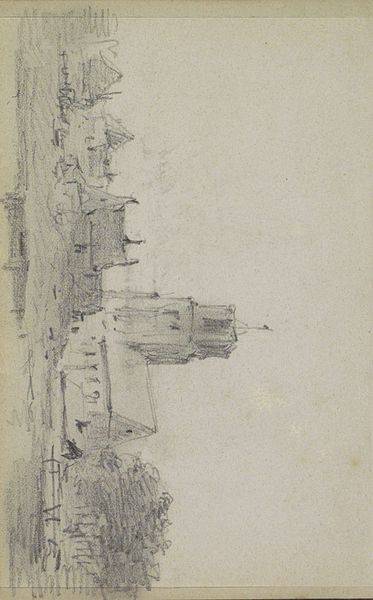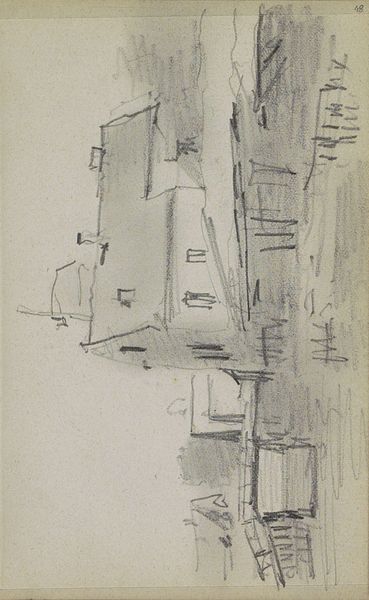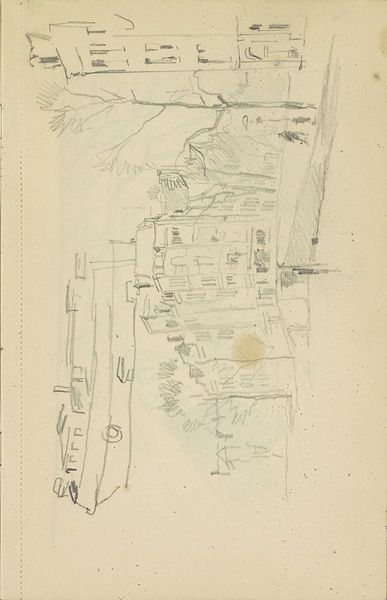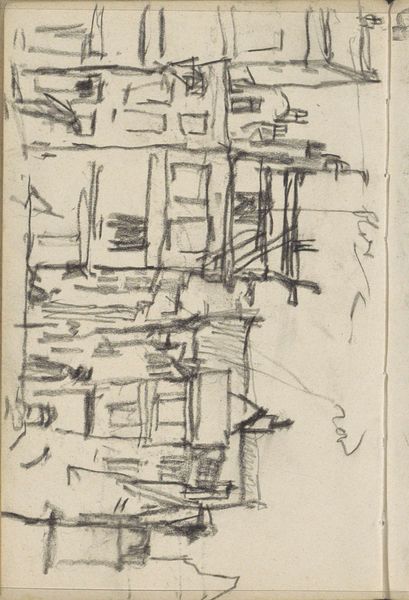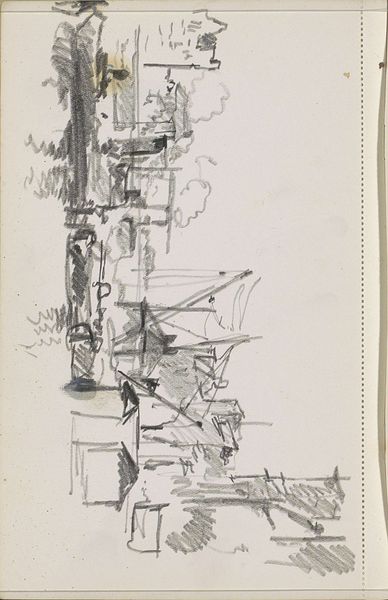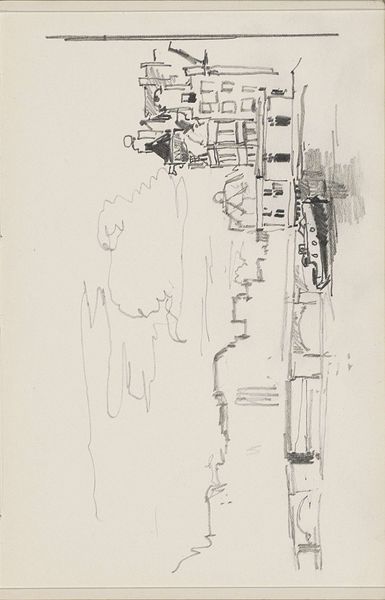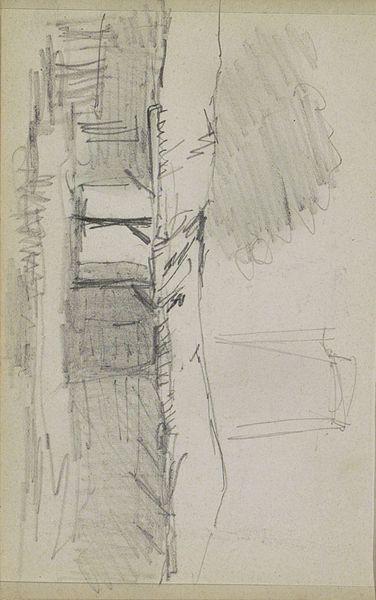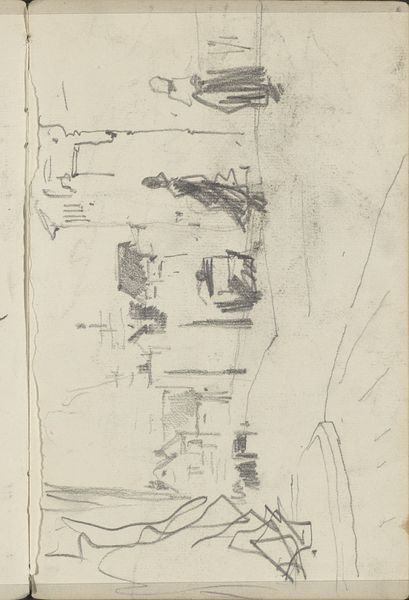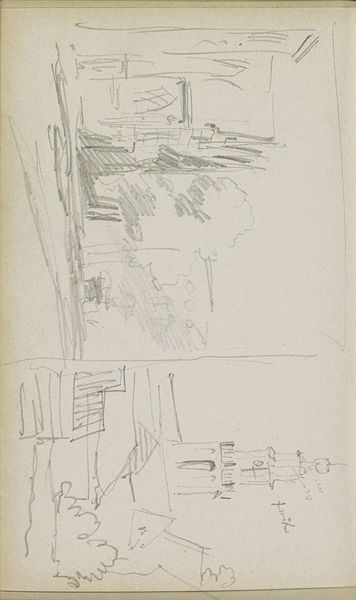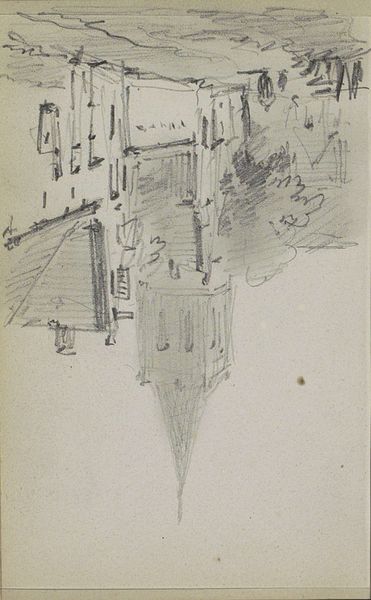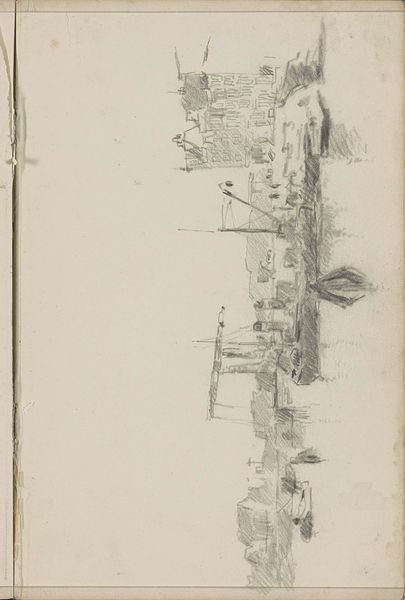
drawing, pencil
#
drawing
#
landscape
#
pencil
#
cityscape
#
realism
Copyright: Rijks Museum: Open Domain
Curator: This delicate pencil drawing is attributed to Adrianus Eversen, created sometime between 1828 and 1897. The work, titled "Stadsgezicht met zeilschepen," offers us a glimpse into a Dutch cityscape populated by sailing ships. Editor: It feels like a half-remembered dream, doesn’t it? Ghostly almost. There’s an undeniable melancholic quality, even with the suggestion of maritime activity. Curator: I agree. Consider, though, the evolving role of cities during that period and Eversen’s place within the social fabric. The Netherlands underwent rapid urbanization throughout the 19th century. Depicting a cityscape links Eversen to conversations around urban development, trade, and evolving social structures. The presence of the sailboats invites questions concerning global trade networks, naval power, and perhaps the environmental impact. Editor: Interesting how these drawings were likely consumed—not simply as charming city views but, in their distribution through burgeoning art markets and public displays, they subtly shaped notions of national identity, collective memory. Whose stories and voices from port communities are ignored in these renderings, particularly those of women and sailors from other parts of the world whose labor supported port economies? Curator: It certainly gives you pause, doesn't it? Editor: Indeed. The swiftness of the strokes indicates this might have been sketched ‘en plein air.’ One feels Eversen sought to distill the essence of the scene swiftly before it slipped away. A commentary of how quick societal transformations could occur during periods of rapid globalization and capitalism, of port ecosystems and neighborhoods erased forever, is offered by those quickly created works on paper. Curator: Furthermore, notice his realism, which ties into the rise of a certain form of truth telling, that being objectivity via rendering exactly as it looks, although inevitably shaped by social narratives regarding ideal cities, or ideas concerning beauty and nature, for example. Editor: Even with its sketch-like quality, or lack of clear lines and distinction. Curator: So what started with what felt a ghost of memory brings a deeper reflection, doesn’t it? It reminds us that we cannot see art devoid of political and sociological histories. Editor: Definitely; it prompts a renewed investigation into representations of social constructs within landscapes and portraiture throughout art history.
Comments
No comments
Be the first to comment and join the conversation on the ultimate creative platform.


